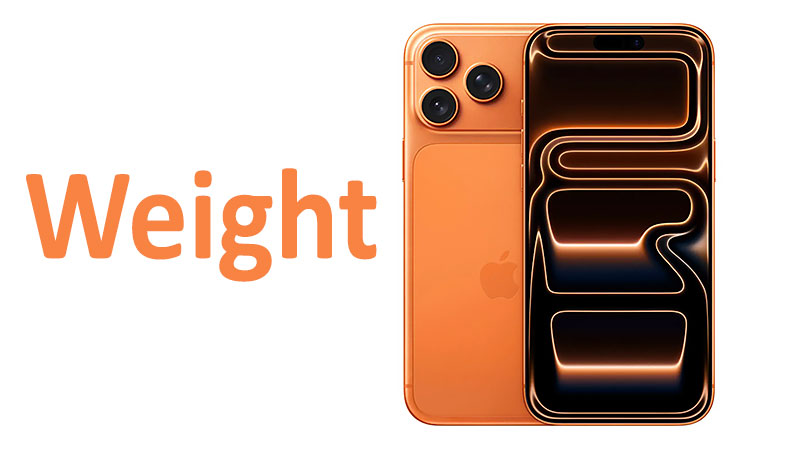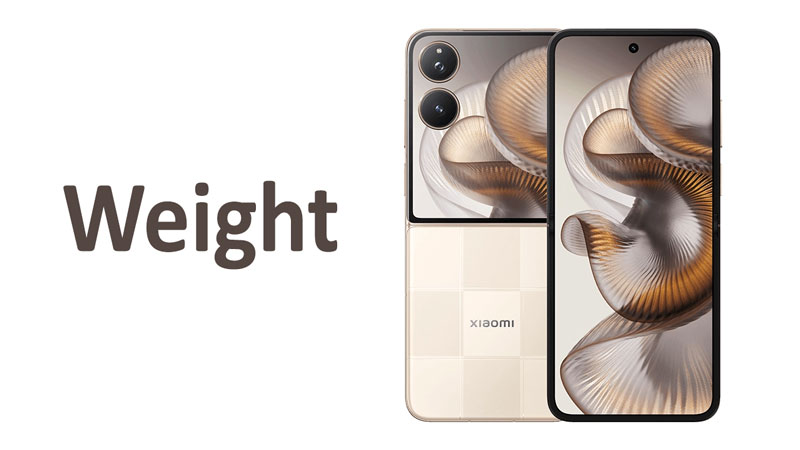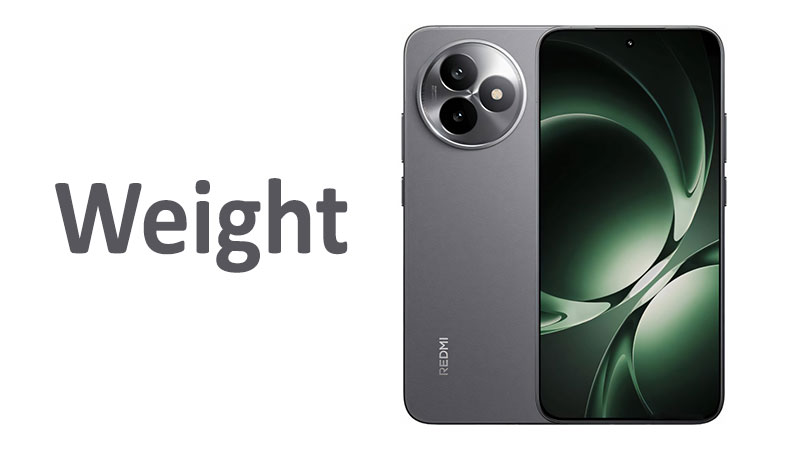The Apple iPhone 17 Pro Max Weight is a crucial specification for any flagship device. Understanding its exact mass helps buyers gauge comfort and portability. The device weighs precisely 233 g. This translates to 8.22 ounces. This article explores what contributes to this specific weight. We will also analyze the implications for daily use and compare it to rival phones. Weight plays a vital role in the premium smartphone experience. A heavy device can feel solid, but also tiring during prolonged use.
Deconstructing the iPhone 17 Pro Max Weight
The 233 g mass of the iPhone 17 Pro Max is not accidental. It is the result of intricate engineering and material choices. This figure represents a balance of durability, performance, and battery life. We must look at both the gram measurement and the ounce equivalent. This provides a clear context for this flagship device.
The Significance of 233 Grams![]()
The gram measurement offers a precise, global standard. At 233 g, the iPhone 17 Pro Max is firmly in the heavy smartphone category. This weight class is common for devices with large displays and large batteries. Modern technology requires significant internal components. These components contribute directly to the total mass. The density of the materials used is also a factor. Every gram serves a purpose in the overall design.
Converting to 8.22 Ounces![]()
The equivalent weight in imperial units is 8.22 ounces. Many users in the United States relate better to this measurement. Over 8 ounces is a substantial heft for a handheld device. A device this heavy provides a sense of robustness and quality. However, it also suggests the need for a firmer grip during operation. Consumers often associate weight with premium build quality. Apple capitalizes on this perception while delivering functionality.
Weight Distribution and Hand Feel
The total mass of 233 g matters, but distribution is also key. Apple engineers carefully balance the internal components. This ensures the phone does not feel top-heavy or bottom-heavy. Excellent weight distribution enhances the perceived comfort. A well-balanced 8.22 oz phone feels lighter than a poorly balanced one. This careful calibration is essential for ergonomic success. The 233 g feels secure and solid in the hand.
Key Components Driving the Mass
Several major elements contribute to the substantial iPhone 17 Pro Max Weight. The physical size of the components is a primary driver. The choice of materials for the chassis also plays a significant role. Understanding these factors provides insight into the phone’s structural integrity.
The Role of the Battery
The battery is typically the single heaviest component in any smartphone. The iPhone 17 Pro Max features a very large 6.9-inch display. This screen demands a massive power source for all-day use. Apple must install a high-capacity lithium-ion battery cell. This requirement is the main reason the phone reaches 233 g. Users will tolerate the extra weight for superior battery life. A larger battery provides peace of mind for heavy users.
Material Science: Frame and Chassis
Apple historically uses premium, dense materials for its Pro Max line. The iPhone 17 Pro Max likely employs a chassis made of stainless steel or titanium. Stainless steel is incredibly durable but very heavy. Titanium offers strength with significantly less mass. If Apple transitioned to a lighter material like titanium, the total 233 g suggests a net gain in component density elsewhere. For example, the use of stronger glass layers adds weight. Ultimately, the choice of frame material balances durability and lightness.
Advanced Camera Systems
The complex camera module also adds considerable mass. Flagship phones like the iPhone 17 Pro Max use large camera sensors. These sensors capture more light and detail. The phone also includes advanced optical image stabilization (OIS) mechanisms. Periscope telephoto lenses, if included, add even more depth and weight. The entire rear camera assembly contributes a measurable amount to the 8.22 oz total. This weight is a direct investment in superior mobile photography.
The Large 6.9-inch Display
The sheer size of the display contributes to the 233 g weight. A larger screen panel requires more glass and internal structure. The display panel is built upon several layers. These layers include the OLED matrix, digitizer, and protective cover. All these layers add up to a noticeable part of the final mass. The 6.9-inch screen requires a large protective shield.
Specialized Comparisons: Weight Across Generations
Comparing the Apple iPhone 17 Pro Max Weight to its predecessors reveals design priorities. Apple consistently tweaks the weight for each new release. These comparisons highlight the balance between feature addition and weight reduction.
The Jump from iPhone 16 Pro Max
Let us assume the previous iPhone 16 Pro Max weighed slightly less, perhaps 228 g. The iPhone 17 Pro Max, at 233 g, shows a 5 g increase. This small increase is highly informative for buyers. It indicates a clear focus on adding features over weight saving. That 5 g gain likely funds a larger battery or a more complex camera. Apple prioritized performance and longevity in this model. Consumers should recognize this deliberate trade-off.
The Titanium Effect on Weight
When Apple introduced titanium, the goal was mass reduction. If the iPhone 17 Pro Max maintains the 233 g mass despite using titanium, it means internal components grew. This signals substantial upgrades in technology. The size of the screen also contributes to the inability to shed weight. Apple successfully incorporated more tech without making the phone significantly heavier. This subtle engineering is important for the high-end market.
Compared to Older Steel Models
Older Pro Max models made with stainless steel often exceeded 240 g. The 233 g weight of the iPhone 17 Pro Max still represents progress. It shows that Apple is managing to keep the device from becoming prohibitively heavy. The ability to keep the weight relatively stable while increasing screen size is an achievement. This stability in mass reassures long-time Pro Max users. They know what to expect in terms of daily carry.
Competitive Analysis: Flagship Weight Wars
The Apple iPhone 17 Pro Max Weight of 233 g must be evaluated against competitors. Flagship Android phones occupy the same premium, high-weight bracket. This competitive analysis helps define the phone’s market position.
Rival Large-Format Devices
Many competing 6.8-inch or 6.9-inch flagship phones also weigh over 220 g. Devices from rivals like Samsung often fall into the 225 g to 235 g range. The iPhone 17 Pro Max fits squarely within this competitive space. This weight is typical for a top-end phone offering maximum features. The industry standard dictates this mass for optimal battery and camera specs.
Weight Perception Versus Reality
Some competitors may advertise a lighter weight. However, this often comes at the expense of battery size or build material. A lighter weight may mean less durable aluminum is used. It might also mean a smaller battery capacity is included. The 233 g of the iPhone 17 Pro Max is a statement of no compromise. It confirms the inclusion of the best available technology. This premium weight signals maximum performance and longevity.
The Compact Phone Difference
The weight of 233 g is substantially higher than standard models. Smaller, non-Max iPhones often weigh under 200 g. This difference is immediately noticeable upon handling the phone. Buyers must recognize the significant trade-off. Choosing the Pro Max means prioritizing power and screen over lightness and portability. The weight difference is a primary decision factor between models.
Ergonomic and Practical Impact of 8.22 oz![]()
The 8.22 oz weight influences the user experience profoundly. This mass affects comfort, portability, and long-term usability. Users should consider these practical aspects carefully.
Hand and Wrist Fatigue
Prolonged use is where the weight truly becomes apparent. Holding 233 g for extended periods can cause wrist fatigue. This is especially true for activities like reading or gaming. Users who spend hours on their phone should consider this factor. An accessory like a pop socket or grip attachment might be necessary. This helps distribute the weight more evenly across the hand.
Impact on Portability
The weight affects how you carry the phone daily. A 233 g phone is significantly noticeable in a pocket. It can cause lighter clothing, such as gym shorts, to sag. The phone’s bulk combines with the weight to limit portability. Users often must carry the iPhone 17 Pro Max in a bag or jacket pocket. This is a practical consideration for active individuals.
The Case Weight Addition
Smartphone cases add considerable mass to the total weight. A rugged case can add another 50 g to 80 g. This brings the total carrying weight close to 300 g or more. Users must factor in case weight when considering the 233 g baseline. Choosing a minimal case is one way to manage the final heft. This helps keep the device manageable during daily activity.
Security and Drop Risk
A heavier object falls with greater force. The 233 g weight increases the risk of damage upon dropping. The phone has more momentum when it hits a hard surface. This makes robust protection even more crucial. Users should invest in a high-quality, protective case. The weight directly translates to potential repair costs.
Pros and Cons of the iPhone 17 Pro Max Weight
Analyzing the 233 g weight involves listing its inherent advantages and disadvantages. These points help consolidate the information for a buying decision.
Weight Advantages (Pros)
The weight conveys a feeling of high quality and solid construction. It suggests a durable build that can withstand moderate impact. The mass is necessary to house the large, long-lasting battery. This is arguably the biggest functional benefit of the weight. Furthermore, the 233 g makes one-handed screen scrolling feel smooth. It helps dampen the impact of minor hand movements. This inertia contributes to a more stable viewing experience.
Weight Disadvantages (Cons)
The primary drawback is the potential for user fatigue over time. The phone is less comfortable for long video calls or extended reading. Its bulk and mass limit pocket portability. It is less convenient for minimalists or those who wear tight clothing. The high weight also increases the impact force during accidental drops. This can lead to more severe damage than a lighter phone.
Buyer’s Guide: Making an Informed Decision
Understanding the Apple iPhone 17 Pro Max Weight is a critical step before purchase. Buyers must honestly assess their usage patterns and comfort levels. This weight is a fundamental characteristic of the device.
Assess Your Current Phone Weight
First, measure the weight of your current smartphone. If it is already over 220 g, the transition to 233 g will be easy. If your current phone is under 180 g, prepare for a significant difference. Hold a weighted object of 233 g for five minutes to test the feel. This provides a realistic simulation of the device’s weight.
Consider Battery Life Priority
Buyers who absolutely need the best battery life should accept the weight. The 233 g mass is unavoidable for a phone with a large battery and screen. If battery life is secondary, consider a smaller, lighter iPhone model. That choice will sacrifice some longevity for better portability. The weight is a direct proxy for power in this device class.
Future Accessory Planning
Factor in the weight of a protective case during the decision process. If you require maximum protection, the total mass will approach 300 g. This combined weight requires a dedicated strategy for carrying the device. You might need to adjust your wardrobe or bag choices accordingly. Plan for this extra heft immediately after purchase. The size and weight necessitate thoughtful accessory choices.
The Premium Feel Factor
Remember that many users appreciate the weight. It contributes significantly to the perception of a premium product. The solid, dense feel of 8.22 oz suggests durability. This weight confirms the device houses the most advanced technology. If a high-end, uncompromising build is your goal, the weight is a positive feature. Accept the mass as a sign of quality and power.
Conclusion
The Apple iPhone 17 Pro Max Weight is specified at 233 g, or 8.22 oz. This weight is not merely a number. It is a calculated measure that defines the user experience. The mass is directly linked to the phone’s large display and necessary high-capacity battery. The 233 g figure places the device at the top end of the flagship category. This makes it comparable to the heaviest rivals.
This weight provides a satisfying sense of quality and robust durability. It facilitates superior camera and battery performance. However, it compromises single-handed comfort and pocket portability. Prospective buyers must weigh the heavy 8.22 oz against the benefits of an immense screen and extended battery life. For the power user demanding the ultimate in mobile technology, this weight is a necessary and justifiable trade-off. Choose the iPhone 17 Pro Max if maximum features trump all other considerations.
FAQ
What is the exact weight of the Apple iPhone 17 Pro Max?
The official weight of the device is 233 grams, which converts precisely to 8.22 ounces in the imperial system.
Why is the iPhone 17 Pro Max heavier than standard iPhone models?
It is heavier primarily because it houses a significantly larger battery cell and a much bigger screen, both of which require more material and density.
Will using a case make the 233 g phone feel too heavy for daily use?
A rugged case can add 50 g to 80 g, bringing the total weight to over 300 g, which many users will find too heavy for comfortable, sustained one-handed use.
Does the iPhone 17 Pro Max weight suggest the use of titanium or steel?
Given the high mass of 233 g, it suggests either the continued use of dense materials like stainless steel or a titanium chassis accommodating larger internal components, such as the battery.
How does the weight impact the longevity of the phone’s battery?
The heavier weight is a strong indicator of a large-capacity battery, which directly translates to extended, all-day battery life, justifying the added mass for power users.



